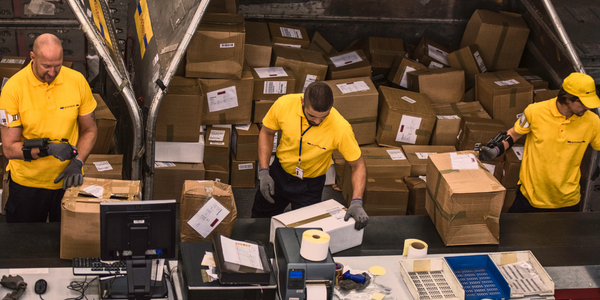Customer Company Size
Large Corporate
Region
- Europe
Country
- United Kingdom
Product
- QlikView Server Enterprise Edition
- QlikView Small Business Edition
Tech Stack
- QlikView
- Excel
- csv
- xml
Implementation Scale
- Enterprise-wide Deployment
Impact Metrics
- Cost Savings
- Revenue Growth
Technology Category
- Analytics & Modeling - Real Time Analytics
Applicable Functions
- Sales & Marketing
- Business Operation
Use Cases
- Predictive Quality Analytics
- Predictive Replenishment
Services
- Data Science Services
About The Customer
The Haymarket Media Group is the largest privately-owned publishing company in the United Kingdom. It publishes more than 100 consumer, professional, and trade titles in some 20 languages and in over 40 countries. They include Campaign (advertising and communications), What Car (motor vehicle buying guides), and FourFourTwo (soccer). The company also publishes websites related to its publications and hosts events including exhibitions and conferences. The Haymarket Business Media division alone sends more than 13 million emails every month to bulletin subscribers and for marketing activity.
The Challenge
Haymarket Media Group, the largest privately-owned publishing company in the UK, was facing a growing volume of business data which left the company data rich but information poor. The company was sending more than 13 million emails every month to bulletin subscribers and for marketing activity. However, without visibility of the data, it was impossible to derive any business intelligence from it. Initially, Haymarket tried to solve this with BusinessObjects’ Crystal Reports and Excelsius software but after six months of work creating dashboards and static reports from management accounts a prototype still wasn’t ready. Then in May 2009 QlikView offered Haymarket a ‘Seeing is Believing’ demonstration. The QlikView software was installed on a server, data loaded, and a dashboard built using 10 million records from their own financial data within three hours. What had previously taken them months was done in hours in QlikView.
The Solution
After the demonstration, Simon was able to build a sound business case for the deployment of QlikView Small Business Edition (now upgraded to QlikView Server Enterprise Edition). He began by seeking buy in from business leaders throughout the organisation. He spent a year building around 200 QlikView applications including 100 proof of concepts for 10 business units at Haymarket covering exhibitions, marketing, internet advertising, procurement, recruitment, and medical websites. By the end of 2011 there are expected to be more than 400 document users of QlikView, and a number of named users, with access to some 300+ million records. A key to the successful adoption of QlikView at Haymarket is that minimal central resource is needed, compared to traditional business intelligence (BI) tools such as BusinessObjects. Simon explains: “We so far have eight super users we have called local data controllers. These are the people who are already pulling together all the spreadsheets, accessing source systems and trying to combine different datasets together. They are expert Excel users with PivotTable reports and graphs. They know their business unit, its objectives, its processes and, most importantly, its data.”
Operational Impact
Quantitative Benefit

Case Study missing?
Start adding your own!
Register with your work email and create a new case study profile for your business.
Related Case Studies.

Case Study
IoT Data Analytics Case Study - Packaging Films Manufacturer
The company manufactures packaging films on made to order or configure to order basis. Every order has a different set of requirements from the product characteristics perspective and hence requires machine’s settings to be adjusted accordingly. If the film quality does not meet the required standards, the degraded quality impacts customer delivery causes customer dissatisfaction and results in lower margins. The biggest challenge was to identify the real root cause and devise a remedy for that.

Case Study
Prevent Process Inefficiencies with Automated Root Cause Analysis
Manufacturers mostly rely on on-site expert knowledge for root cause analysis. When the defective product is sent to lab for analysis, it is laborious and always a post-mortem one. Manufacturers that collect data from IT and OT also need a comprehensive understanding of a variety of professionals to make sense of it. This is not only time consuming, but also inefficiencient.

Case Study
Digitalising QC records
Ready-mix concrete batching plant with seasonal demand 6,000 to 12,000 cu.metre per month.Batch-cycle records for each truck is stored in paper format. 1000 to 2000 truck loads per month, generating ~2000 to 6000 paper records.QC anomaly detection in chemical batch-mixing is manual & time consuming.

Case Study
Automotive manufacturer increases productivity for cylinder-head production by 2
Daimler AG was looking for a way to maximize the number of flawlessly produced cylinder-heads at its Stuttgart factory by making targeted process adjustments. The company also wanted to increase productivity and shorten the ramp-up phase of its complex manufacturing process.

Case Study
CleanTelligent Enhances Janitorial Software Solutions with Infor Birst
CleanTelligent Software, a company that aids in-house and contracted janitorial teams in streamlining communication and improving quality control, faced a significant challenge. Their clients were demanding a more dynamic way to present reporting data. The company's software was primarily used to analyze and summarize a custodial team's performance, replacing a highly manual, paper-driven process. However, the initial differences between service providers in the janitorial industry are often unclear, and the cost of switching is comparatively low. This situation led to high client turnover, with a janitorial company's customer lifetime averaging four years or less. CleanTelligent needed to improve the customer experience with dynamic dashboards and reporting, retain customers through predictive analysis, capitalize on advanced analytics capabilities to build market differentiation, and improve client retention rates.

Case Study
Digitization of Pharmaceutical Packaging Machines: A Case Study of CVC Technologies
CVC Technologies, a leading manufacturer of pharmaceutical packaging machines, was seeking an end-to-end IoT solution to fully digitize their pharmaceutical liquid filling and capping machines. The company aimed to enhance the safety of their equipment, introduce digital maintenance capabilities, and gain visibility into machine status from anywhere at any time. The challenge was to find a solution that could provide real-time visibility into the machine's status, deliver direct cloud connectivity and digital services, and simplify all aspects of the machine's lifecycle, from engineering to maintenance.



